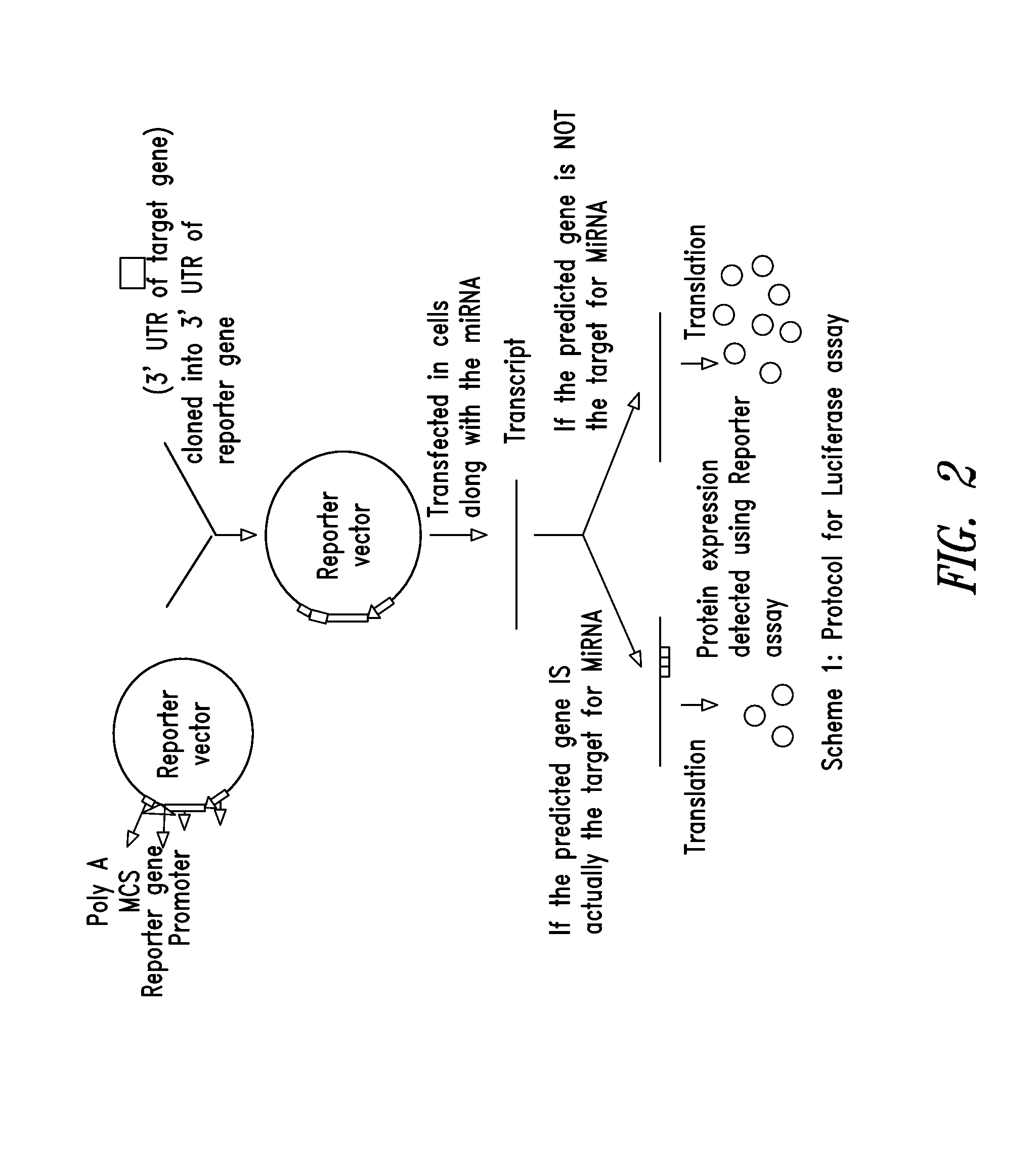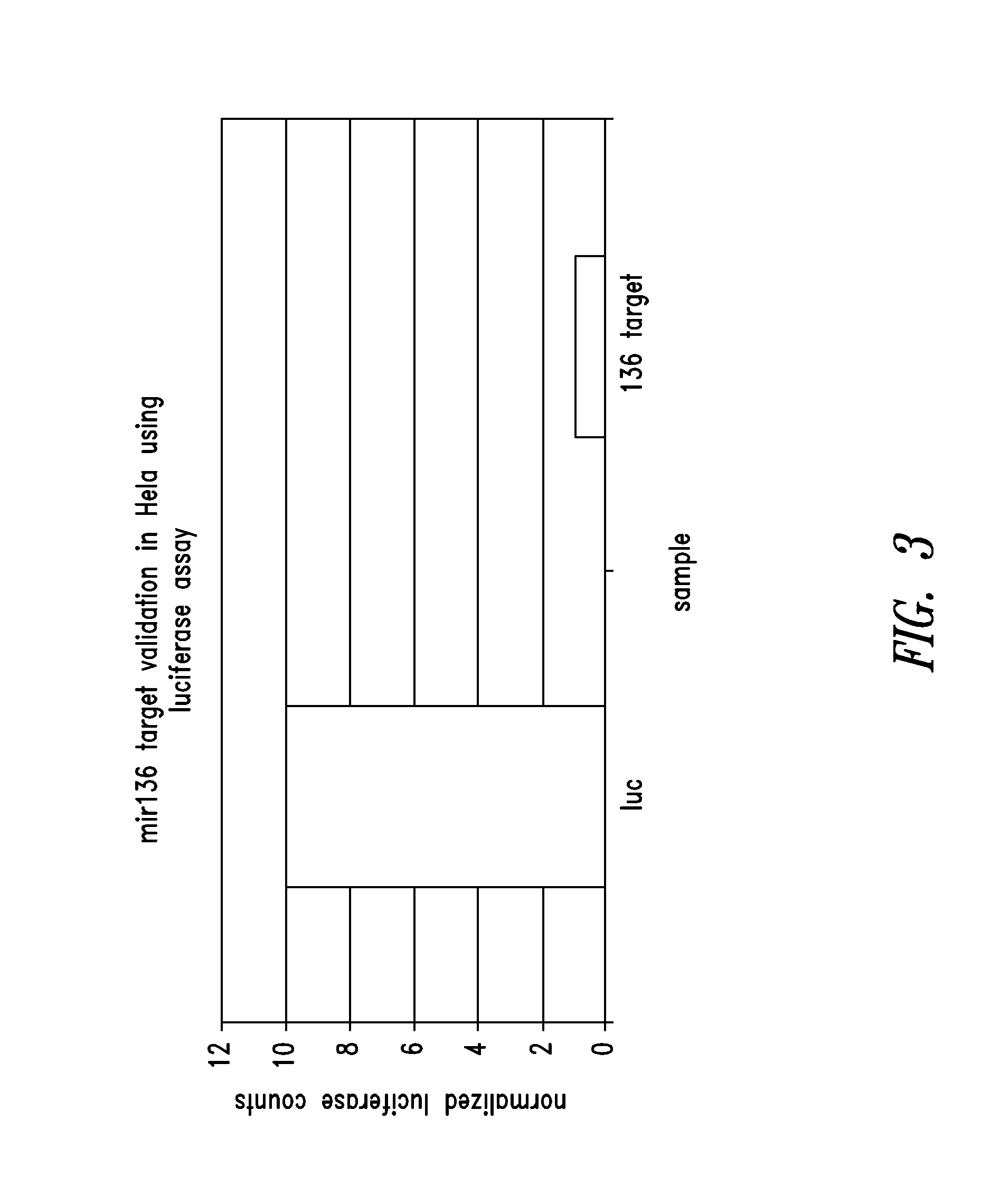Targets for human micro rnas in avian influenza virus (H5N1) genome
a technology of avian influenza virus and target genome, which is applied in the direction of peptide sources, instruments, genetic material ingredients, etc., can solve the problems of high pathogenic form spreading more rapidly, susceptible birds becoming infected, and very sick domesticated birds,
- Summary
- Abstract
- Description
- Claims
- Application Information
AI Technical Summary
Benefits of technology
Problems solved by technology
Method used
Image
Examples
example 1
[0056]The human microRNA mature sequences were downloaded from the database of miRNA maintained by the Sanger Center named—The miRNA Registry (Sanger Institute, Manchester, UK). For querying probable targets in the H5N1 / A virus genome, the inventors used the RefSeq validated H5N1 / A virus reference sequence, obtained from the NCBI website.
example 2
Prediction of miRNA Targets in H5N1 / a Virus
[0057]Four well-established microRNA target prediction softwares—miRanda, RNAhybrid, MicroInspector and DIANA-MicroT were used to predict targets for the human miRNAs in the H5N1 / A virus reference sequence. Only those sequences were prioritized as targets which were predicted by all the four software. These short-listed H5N1 / A (HIV-1) targets to human microRNAs were also found to be highly probable targets on the other prediction software. The top scoring miRNA-target pairs are tabulated in Table 1. Prior to running the RNAhybrid program, the RNAcalibrate module was used to derive the xi and theta values for calculation of Extreme Value Distribution. The xi−theta values thus obtained were included as one of the parameters while using RNAhybrid for target prediction. This minimized the base composition bias. Also, the helix parameters were set to include maximum continuous complementarity towards the 5′ end of the miRNA. It was observed tha...
example 3
Mapping of miRNA Targets
[0060]The miRNA hsa-mir-507 [SEQ ID NO:5] targeted the PB2 gene whereas hsa-mir-136 [SEQ ID NO:6] targeted the HA gene of H5N1 / A virus. The HA and PB are critical for the pathogenicity of the virus. HA is the surface glycoprotein which is involved in direct binding of the virus to the cell surface. The HA in the H5N1 subtype carries a polybasic site, cleavage at which, by cellular proteases is an essential step in establishing infection. PB2 is one of the three components of the RNP (Ribonucleoprotein) which is responsible for RNA replication and transcription. Recent evidence, from recombinant viruses generated by combinations of murine and avian viruses identified PB2 as one of the two genes associated with virulence.
PUM
| Property | Measurement | Unit |
|---|---|---|
| pH | aaaaa | aaaaa |
| stability | aaaaa | aaaaa |
| temperature | aaaaa | aaaaa |
Abstract
Description
Claims
Application Information
 Login to View More
Login to View More - R&D
- Intellectual Property
- Life Sciences
- Materials
- Tech Scout
- Unparalleled Data Quality
- Higher Quality Content
- 60% Fewer Hallucinations
Browse by: Latest US Patents, China's latest patents, Technical Efficacy Thesaurus, Application Domain, Technology Topic, Popular Technical Reports.
© 2025 PatSnap. All rights reserved.Legal|Privacy policy|Modern Slavery Act Transparency Statement|Sitemap|About US| Contact US: help@patsnap.com



